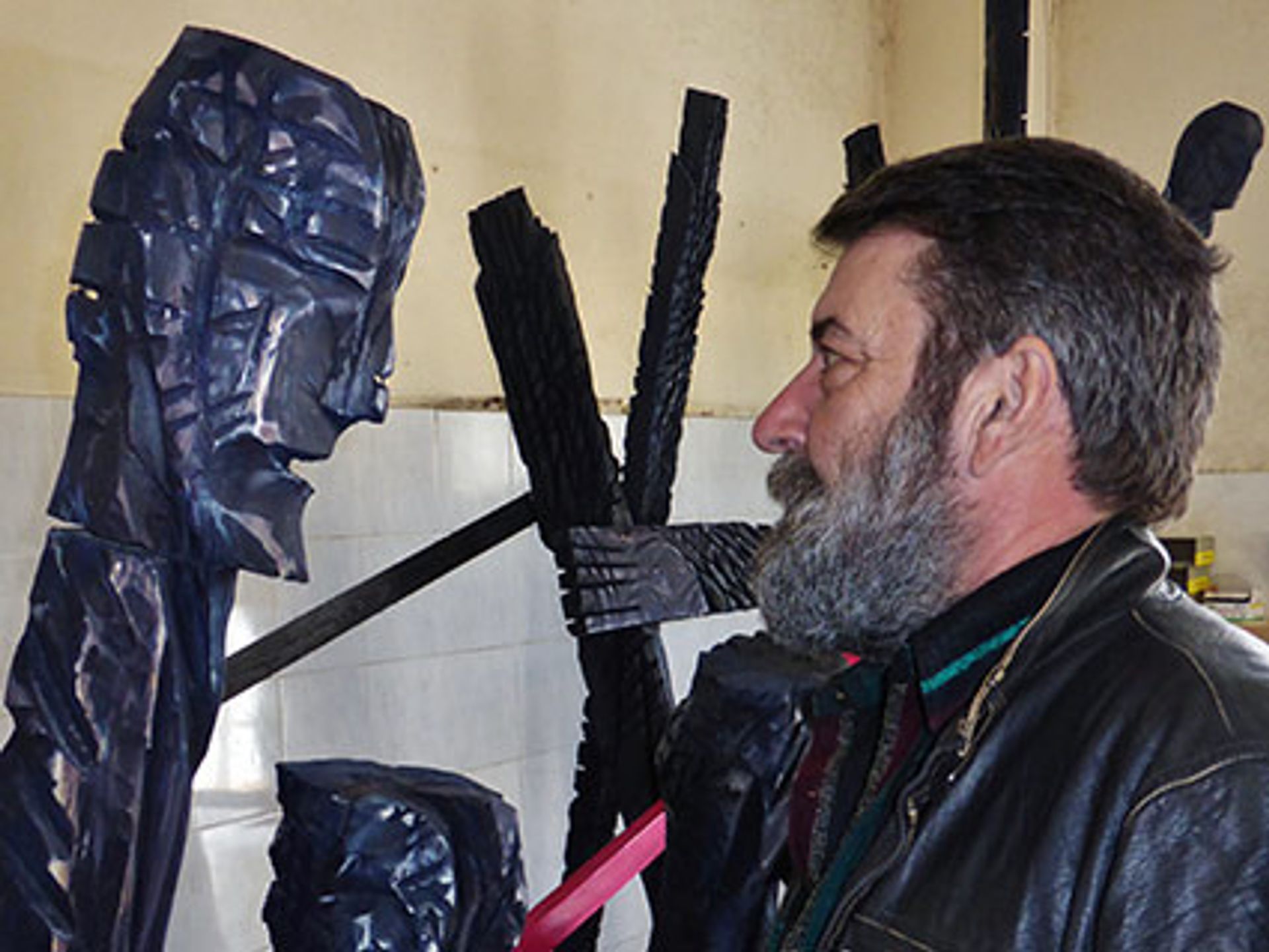One of the Azerbaijan Pavilions at this year’s Venice Biennale (9 May-22 November) will be dominated by large-scale installation in blackened wood by Hüseyn Haqverdi that chillingly symbolises the country’s Soviet past.

Consisting of slender wooden figures scarred with geometric, hand-grenade patterns, Haqverdi has been working on them for months in a dusty builder’s yard on the outskirts of Baku, armed with his trusty rotary saw. The artist's figures have a sharp angularity reminiscent of Giacometti and his work echoes Alfonsas Vincentes Ambraziūnas’s gigantic 1970s war memorial in the Lithuanian city of Kaunas, although the jagged cliffs around Baku offer a closer source of inspiration.
Writing in the catalogue for the country’s Venice Biennale pavilion, the Azerbaijani art historian Shirin Melikova describes the figures, “as prickly as thorns or arrows—symbolising an era that crippled the destinies of millions”.
The title of Haqverdi’s installation, Beyond the Line, is is shared by the exhibition in this Azerbaijan Pavilion. It comes from a song in a 2012 film by Shamil Najafzada, Stepping Over The Horizon, that charts the lives of several Azerbaijani non-conformist artists from the 1950s to the 1970s. Both the film and works by these artists, Ashraf Murad, Javad MirJavadov, Tofik Javadov, Rasim Babayev, Fazil Najafov, Shamil Najafzada, will also feature in the country’s Venice pavilion. Meanwhile, the Heydar Aliyev Foundation has commissioned a second Azerbaijan Pavilion, hosting the exhibition Vita Vitale, organised by Artwise.
Haqverdi, who was born 1956, suffered more than most during the Soviet era. His father Hasan, who was also an artist, fought in the second world war, was imprisoned by the Nazis, then spent a decade in Stalin’s Gulag after being “freed”. Back in Baku he was banished to the provinces and harassed by the KGB. The stigma stymied his son’s career. After graduating from St Petersburg’s Mukhina (now Stieglitz) Academy in 1980, he struggled to make a living until Azerbaijan became independent in 1991, and the arrival of new embassies and foreign companies made his work accessible to an international audience.
Although a superlative draughtsman in a style blending Feininger and Cubo-futurism, Haqverdi is better known as a sculptor. A solo-show of his works in stone took place at Baku’s Contemporary Art Museum last November; several of them (priced €9,000-€20,000) were subsequently offered at Art Dubai in March by Yay Gallery, the commercial offshoot of Yarat, the Baku-based foundation that opened a Contemporary Art Centre by the Caspian on 23 March. The Yarat foundation will be staging a Collateral Event in Venice featuring work by artists Rashad Alakbarov and Almagul Menlibayeva.
Simon de Pury, one of the curators of Beyond the Line, calls the artists who lived through the Soviet era a “lost generation”. De Pury says: “[Their] inner passion helped them confront all the obstacles thrown in their way… Now, finally, they are being given a stage.”

